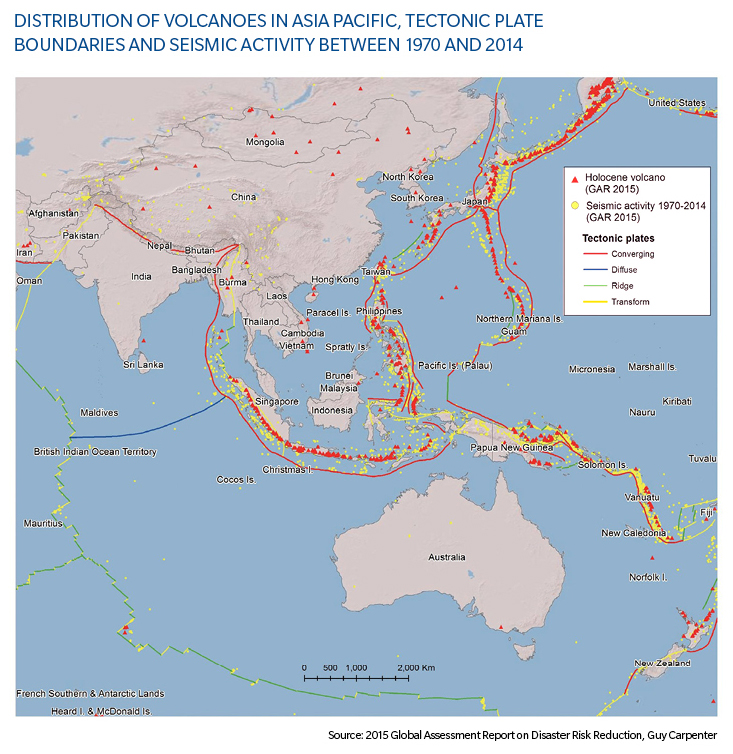Guy Carpenter released a report on the potential for losses caused by volcanic eruption across the region and the implications from an insurance point of view.


While volcanic eruptions are relatively infrequent compared to other natural perils, they have the potential to generate significant losses over a large area, with volcanic ash fall potentially spreading across several hundred kilometers. The Pinatubo eruption in the Philippines on June 15, 1991, resulted in approximately 850 fatalities, the mass evacuation of 60,000 people and the destruction of over 140,000 dwellings. Total economic losses amounted to over USD 1 billion, including a loss of approximately USD 100 million to the aviation industry due to the spread of volcanic ash as far as the east coast of Vietnam and Singapore. The Pinatubo eruption is considered to be a one-in-one-hundred year event within the Asia Pacific region.
With the Asia Pacific region containing most of the world's active volcanoes and some of the most densely populated countries, it faces a disproportionately high risk regarding economic loss and human deaths posed by volcanic and related hazards. Within the region, the countries with the highest number of active volcanoes are (in descending order): Indonesia, Japan, Papua New Guinea, Philippines and New Zealand.
According to Lloyd's City Risk Index 2015-2025, six of the world's top ten major cities affected by volcanic threats are in Asia. The top ten cities measured by gross domestic product at risk are: Mexico City, Tokyo, Taipei, Manila, Jakarta, Singapore, Osaka, Santiago, Quito and Bogota. Guy Carpenter's forthcoming report focuses on the potential risk posed by selected volcanoes in the Asia Pacific region and provides preliminary estimates of the associated economic and insurance risk based on publicly available information of volcanic hazard and exposure. The report also provides an overview of the insurance market in those countries and the conditions under which volcanic hazard is covered by the market.